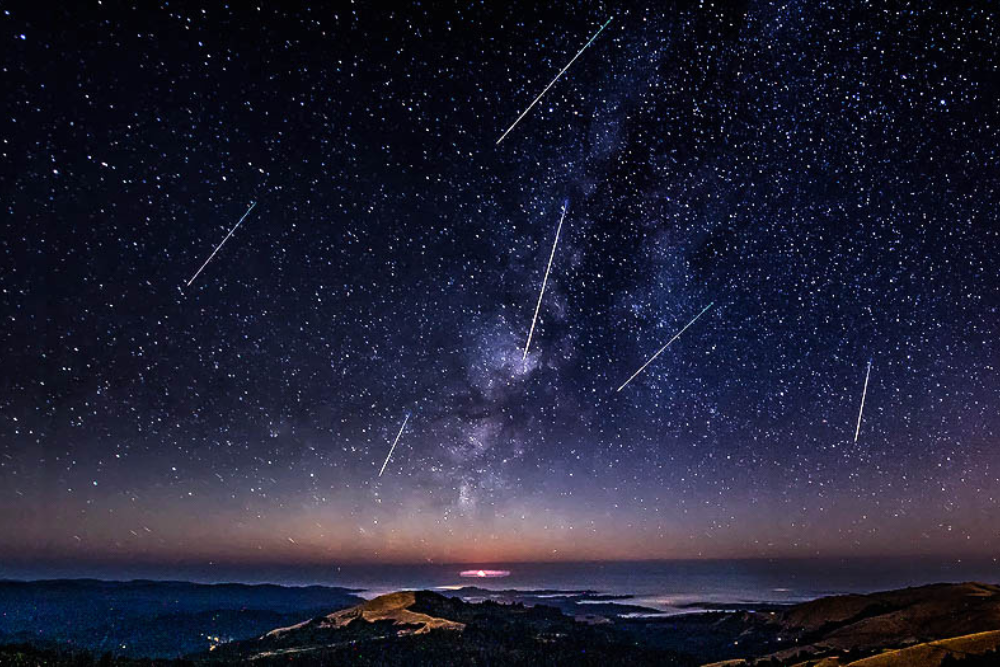When the earth travels in the path of a comet, the sky lights up with meteor showers!
This new year will bring lots of amazing sky-watching opportunities, including meteor showers, super moons, and even an annular solar eclipse. It’s a terrific time to buy a telescope if you don’t have one and a wonderful opportunity to book some time away in an area prime for watching this amazing, natural phenomenon.
If you are just going to watch the sky a few times, look for large meteor showers that won't have too much moonlight, washing away weak streaks. Peak times for two of the most popular showers, the Perseids and Geminids, will be nearly entirely free of moonlight in 2024!
Perseid Meteor Shower in August
The Perseid meteor shower is often regarded as the greatest of the year, with a peak of 50 to 100 meteors per hour and some extra-bright "fireballs." The mild weather allows for an enjoyable watching experience. Stargazers will have a significant advantage in 2024 that they didn't enjoy in 2023. The Perseids will peak around August 12, when the moon will be near new.

Leonids in November
The Leonids will peak in the early morning hours of Nov. 18, according to EarthSky. Because the moon will be only about a quarter full, it is unlikely to steal the show. The Leonids can emit up to 15 brilliant, rapid, and colorful meteors each hour. The shower is famous for fireballs and "earth-grazer meteors," with their lengthy, multi-colored tails that streak close to the horizon. And every now and then, viewers are treated to a spectacular display.
Geminid meteor shower in December
The Geminid meteor shower will be active from November 19 to December 24, producing its peak rate of meteors around the 3rd. There will be a chance of seeing Geminid meteors whenever the shower's radiant point – in the constellation Gemini – is above the horizon, with the number of visible meteors increasing the higher the radiant point is in the sky. At its peak, the shower is expected to produce a nominal rate of around 120 meteors per hour. However, this hourly rate is calculated assuming a perfectly dark sky and whether the radiant of the shower is directly overhead.
LUXURY HOMES FOR WATCHING METEOR SHOWERS
Villa Sophie, The Hamptons
The stately Villa Sophie is nestled in the prestigious East Hampton area, exudes serene ambiance with lush foliage, aromatic groves, and breathtaking views providing absolute tranquility and privacy. This luxury vacation rental features sophisticated design and top-of-the-line amenities, including a heated saltwater gunite pool and an inlaid hot tub for ultimate relaxation. With six meticulously designed bedrooms and elegant, airy interiors, Villa Sophie ensures an unforgettable stay in utmost comfort and style. It is positioned ideally for watching the celestial dances of meteor showers.

Villa Charlotte, Aspen
Villa Charlotte is a stunning, contemporary chalet in the Colorado Rocky Mountains. This luxury Aspen vacation rental sits on more than 35 acres of pristine land with skies that are as clear as fine crystal – ideal for watching falling stars and meteors. Every inch of this home’s 13,000 square feet is resplendent with the finest craftsmanship. Eight bedrooms can accommodate up to 16 guests who will enjoy the wine cellar, gym, library, outdoor hot tub, heated outdoor pool, and tennis court.

Watching is one thing, Collecting is Another
Collecting meteorites has become an ardent pastime for many. Not only can it be financially lucrative, but it also means you have a veritable piece of the universe in your hands. One of the first people to offer meteorites for sale to the public was Harvey H. Nininger, who opened a meteorite museum on Route 66 in Arizona in 1946. During the 1970s and early 80s enthusiasts such as Robert Haag, Allan Langheinrich, Marvin Kilgore, Blaine Reed, and Edwin Thompson began turning their passion for space rocks into legitimate businesses and the modern world of meteorite collecting was born. Today, space rocks are readily available from many different outlets and the quarterly Meteorite magazine caters to space rock enthusiasts, as does the monthly online publication Meteorite Times and the Meteorite Mailing List (online listserve).
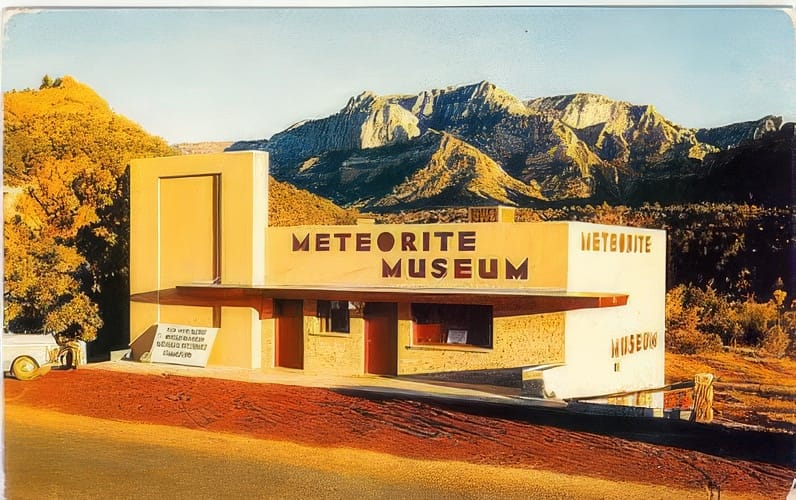
Just how Valuable are Meteorites?
Meteorites are typically sold by weight in grams and kilograms with dimensions in centimeters and millimeters. The commercial value of a meteorite is determined by a number of factors:
- Rarity of type
- Provenance
- Condition of preservation and
- Beauty or aesthetic appeal
Surplus specimens find their way onto the commercial market once academia analyzes and classifies a meteorite. Acceptance into official scientific literature actually adds commercial value to a meteorite. At the high end of the pricing scale are unusual types such as the diogenite Tatahouine (fell June 27, 1931, Foum Tatahouine, Tunisia). A prime specimen can sell for $50/gram while rare examples of lunar and Martian meteorites may sell for $1,000/gram or more – nearly 40 times the current price of gold!
9 Most Expensive Meteorites Ever Sold
Meteorites can weigh a few ounces up to more than 1,000 pounds. Here is a list of the nine most expensive meteorites ever sold:
Super Main Mass Meteorite - This individual meteorite was found in the Sahara desert in 2018. It has a fused crust along the outside from entering the atmosphere. It weighs only 3.68 pounds, but because of its Martian origin, its value was driven up. Martian meteorites are identified by their isotopic composition from gasses trapped in the stone from Mars’s atmosphere. It sold at a Bonhams auction for between US$375,000-$450,000.
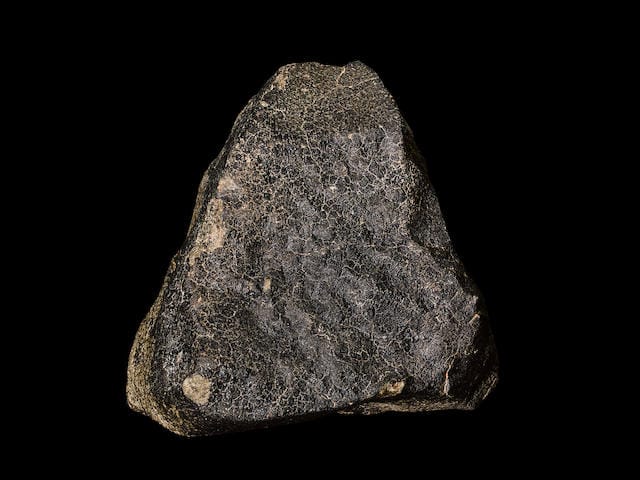
Gibeon Meteorite - The scoops in the surface of this meteorite are natural, formed from the stone’s time in the molten core of its original asteroid. It was found in the Kalahari Desert in Namibia in 1838 and is estimated to be about 4.5 billion years old. Iron meteorites like this are crystalline, heated to 3,000 degrees on entry into earth’s atmosphere, which melts the surface. They then harden and reform in the elements for thousands of years. This specimen sold at a Christie’s auction in February 2021 for $437,500.
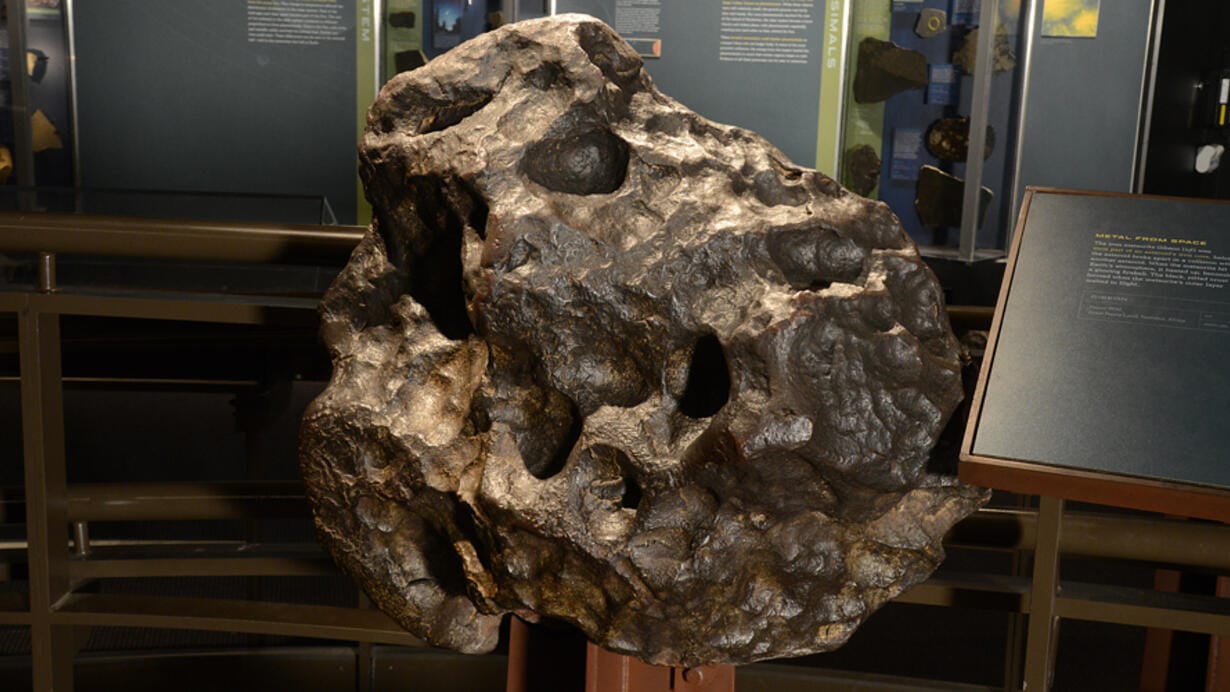
Tisserlittine Lunar Meteorite - A large lunar meteorite, Tisserlittine 001, sold at a Christie’s auction in February 2021 for $525,000. It is the 4th largest piece of the moon on Earth and was discovered in Tisserlitine in Timbuktu in 2019. Forty-six of these stones were collected, with 44 of them being tiny. Only two were large enough to be notable, one of which weighed 88 pounds. Its composition is, of course, the mineral composition of the surface of the moon: anorthite, pigeonite, augite, olivine, spinel troilite, and other trace elements. The Apollo Missions have never brought back a stone this heavy. Fewer than 750 kilograms of meteorites of the lunar surface exist on Earth, with 382 kilograms brought back from the moon by astronauts, all of which are owned by the US government or museums. The remaining kilograms are notable since anyone can own, buy, or sell them if they find them.
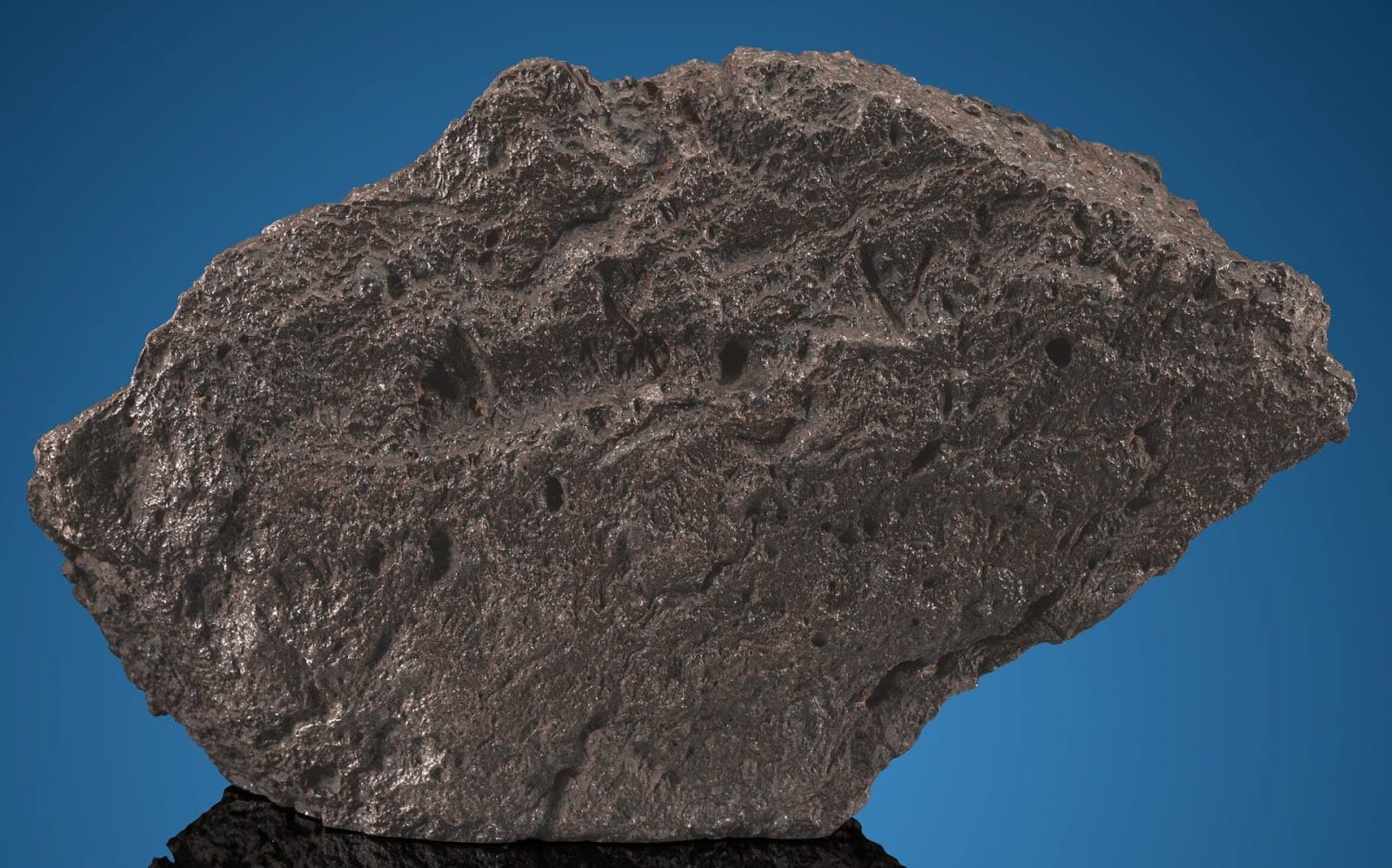
Springwater Meteorite - The Springwater meteorite was found in Saskatchewan, Canada, in 1931 near Springwater. It was found in three large chunks (or “masses”). The chunks weighed 85 pounds, 41 pounds, and 23 pounds. There was also one discovered in 2009 that weighed 117 pounds that was never sold, but instead donated to the Royal Ontario Museum. This meteorite is a pallasite, made from previously molten iron, rich in metallic phases of kamacite and taenite, with olivine littered throughout the structure. One of the large chunks of this meteorite has been valued at US$533,100.75. The mineral known as olivine is the main mineral element of the earth’s surface. It is used in ultra-compressed forms as the gemstone, peridot, and in metalworking processes. In meteorites, olivine gives pallasites their unique yellow-specked, shiny surface.
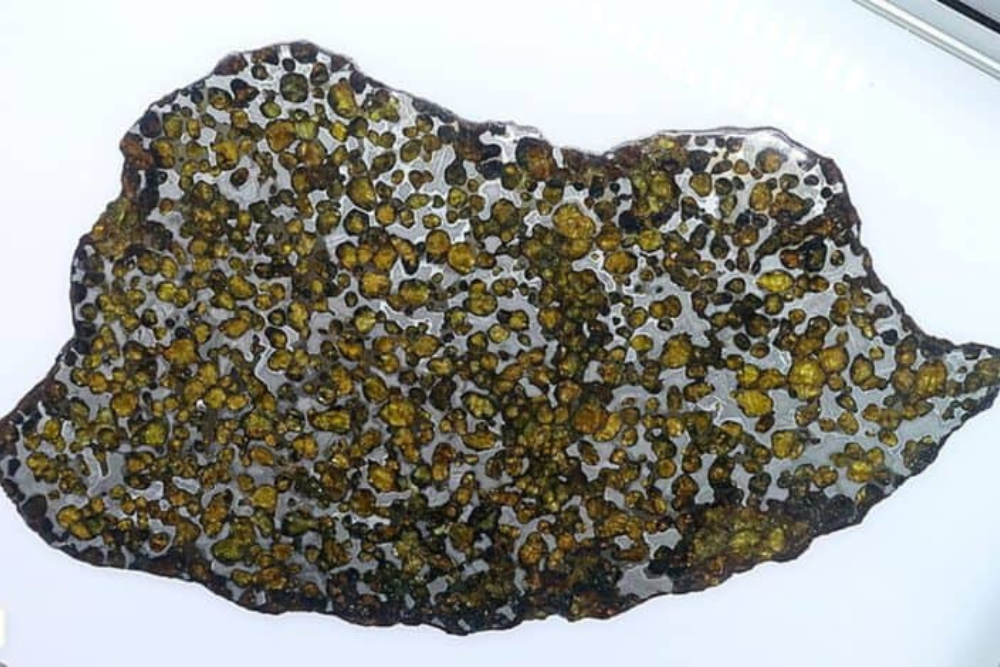
Bur-Abor Meteorite - Bur-Abor is an incomparable meteorite specimen discovered in Kenya in 1997. It was sold in Los Angeles in May 2021 at a Bonhams auction for between US$600,000-$800,000. The main mass features many scoops and regmaglypts, which are gemology terms for the pits and loop shapes in the main mass. These are rare, created over millions of years of space travel while the stone was still part of an asteroid's heavy metal molten core. A part of the rock is on display at the Natural History Museum of London. The main mass that was sold at Bonhams weighed 274 kilograms and had never been brushed or cleaned, preserving the authenticity of the stone. Unlike most of the meteorites on this list, Bur-Abor fell comparatively recently. It was discovered in its recent crater in a family’s garden in Kenya in November 1997.
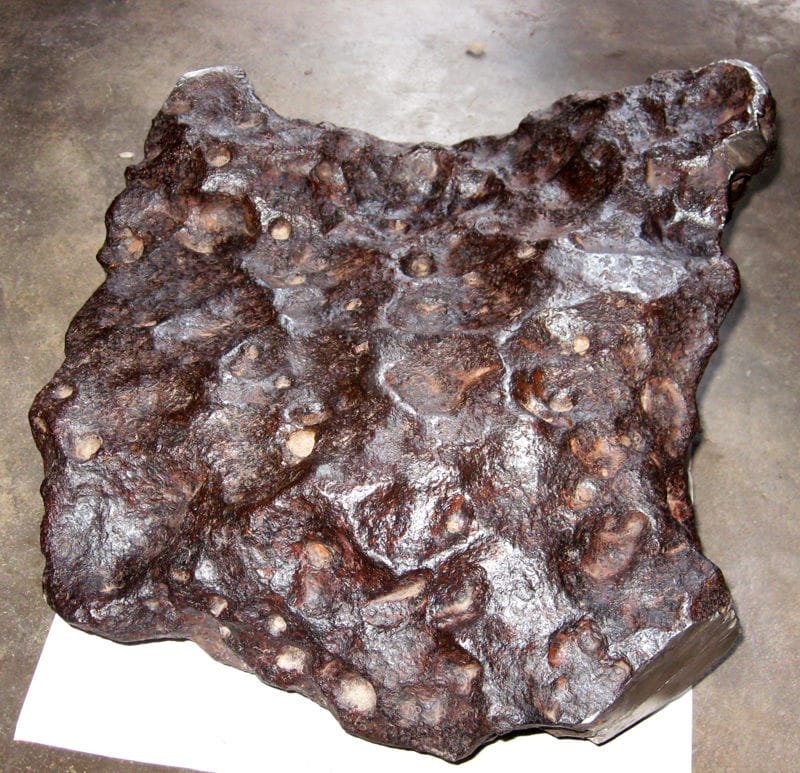
The Conception Junction Meteorite - The Conception Junction Meteorite was found in 2006 near the town of the same name, with a population of only 202. A farmer found the rock buried in a hill and eventually discovered by way of geologists at Washington University, St. Louis, that it was extremely rare, worth more than $755,299.24. The meteorite is an iron pallasite of a particularly rare variety, especially for its weight at 37.5 pounds. Karl Aston, who discovered the rock, has donated a large portion of it to museums and universities, though chunks of it are still for sale. Randy Korotev, the geochemist who identified the rock, has a term for what people bring to him that he calls “meteor wrongs,” or terrestrial rocks or sediment formations that look weird, so people assume they must be extraterrestrial. Hopeful collectors should know that only 20 pallasite meteorites have ever been found in the United States.
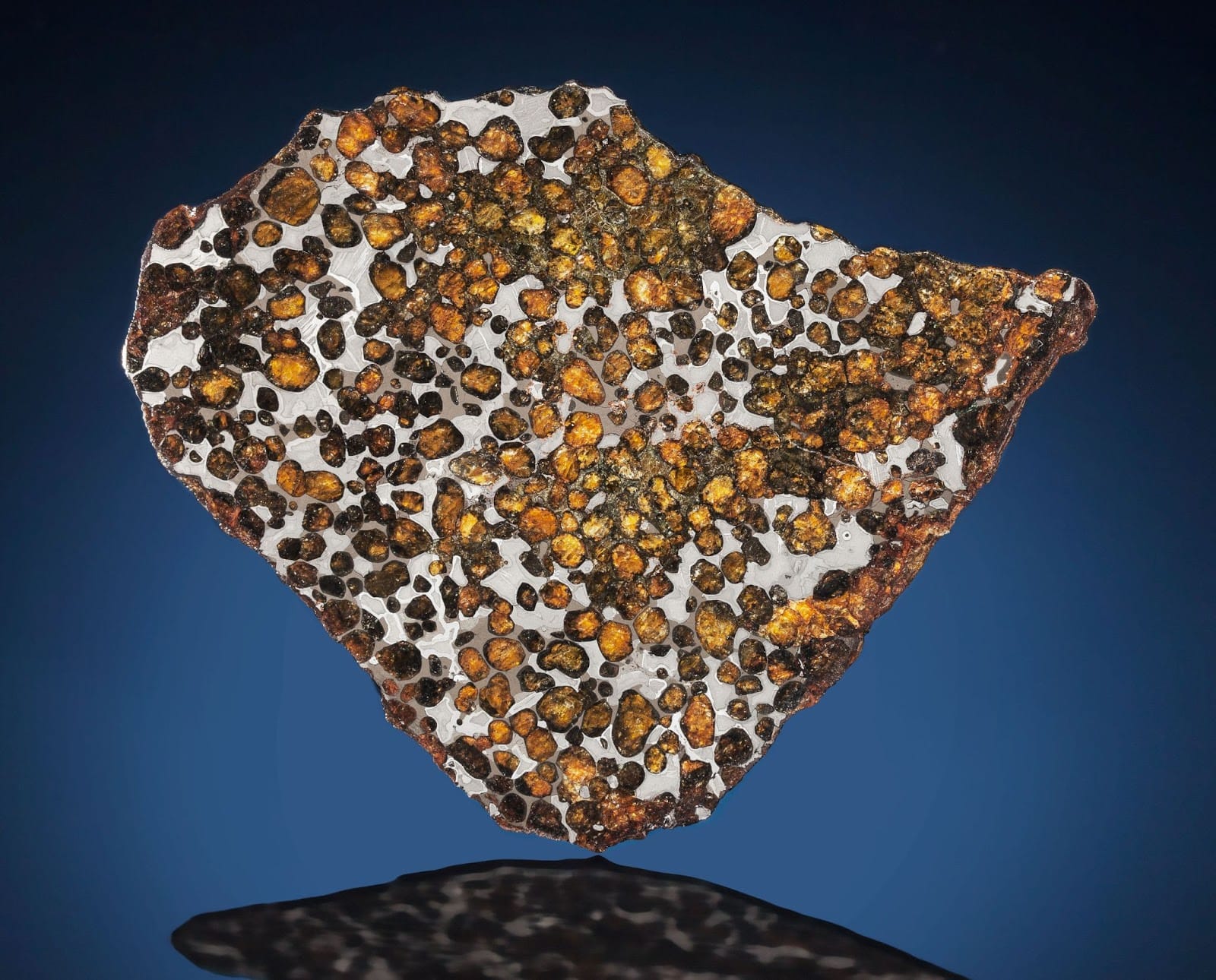
Brenham Meteorite - The Brenham meteorite fell to earth around 20,000 years ago and was found in Kiowa County, Kansas, in 1882. The stone is a pallasite, which many on this list are, formed of stony iron. When cut, pallasites reveal shiny olivine (or peridot) crystals in the stone’s interior. The meteorite was found near the Haviland Crater, so is thought to be from the same meteor that made it. The main mass weighs 1,430 pounds and is valued at $934,680.32. There are several specimens of the Brenham meteorite in existence. The two main ones are this one, which is currently in a private collection in Texas, and a second that was named “The Space Wanderer,” which weighs 1,000 pounds and is on display in Greensburg, Kansas, at The Big Well. At one time, 8,500 pounds of the Brenham meteorite were collected in one place at the Kansas Meteorite Museum.
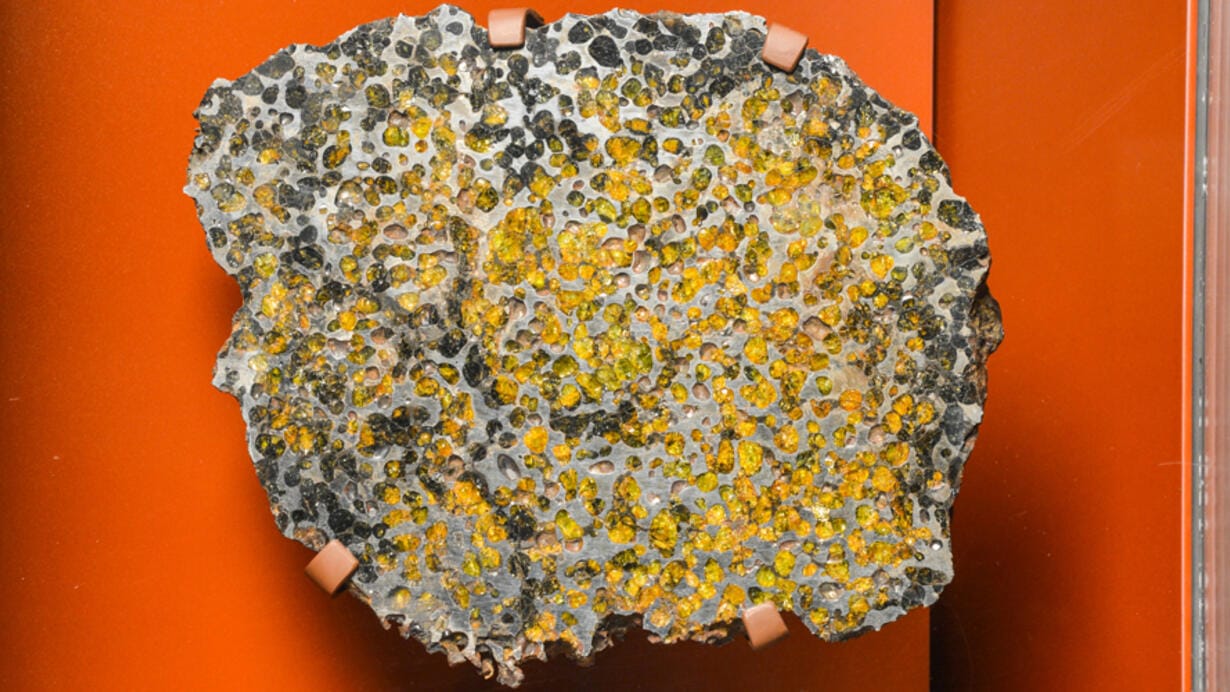
Willamette Meteorite - The Willamette Meteorite is a 15.5-ton meteorite made from iron in a medium octahedrite configuration. It has a smooth appearance due to its surface melting as it re-entered the atmosphere. Asteroids with molten iron cores, like those of whatever the Willamette Meteorite came from, produce chunks like these when colliding with other asteroids, which exposes the core and creates the debris that can become a meteorite. This likely happened billions of years ago, though no one can say for sure. Even the date that the fragment was found on earth is not well-known, though it was discovered in Clackamas County, Oregon. It has been on display in the American Museum of Natural History in New York since 1906 and is currently valued at between US$1.1 and $1.3 million. There are about 25,000 meteorites on Earth, but only 600 of them are made of iron, which can only be created in space by fusing lighter elements within stars, which later shatter under the force of nuclear fusion, scattering elements like iron into space. They eventually accumulate gas and dust and form asteroids, like the one the Willamette Meteorite is a piece of.
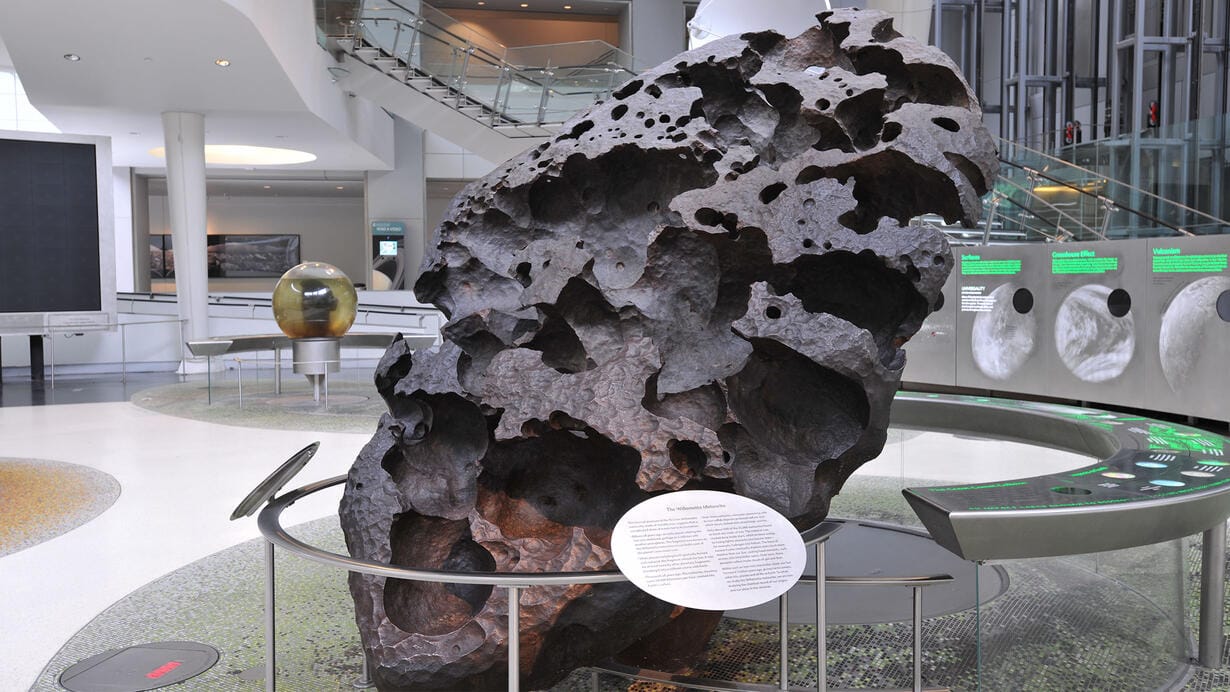
The Fukang Meteorite - The Fukang meteorite is the most expensive. It was found in 2000 in the mountains of China. It’s a type of meteorite known as a pallasite, made from stony-iron with crystal formations of olivine or magnesium-iron silicate. They are arranged in what is called a nickel-iron matrix. The meteorite is 4.5 billion years old, so the stone that hit the earth is about as old as the earth itself. When it was found, it weighed 2,211 pounds. A Chinese dealer removed a 44-pound chunk from it and showed it at the Tucson Gem and Mineral Show. This was when the meteorite began to be investigated and is now considered the rarest and oldest of all meteorites. The most expensive chunk of it was valued at more than US$1.77 million. A Bonhams auction attempted to sell the main mass of the meteorite in 2008 for $2 million, but the lot was unsold. This included an area of the stone polished or “windowed,” providing a view of the gem areas within the meteorite.
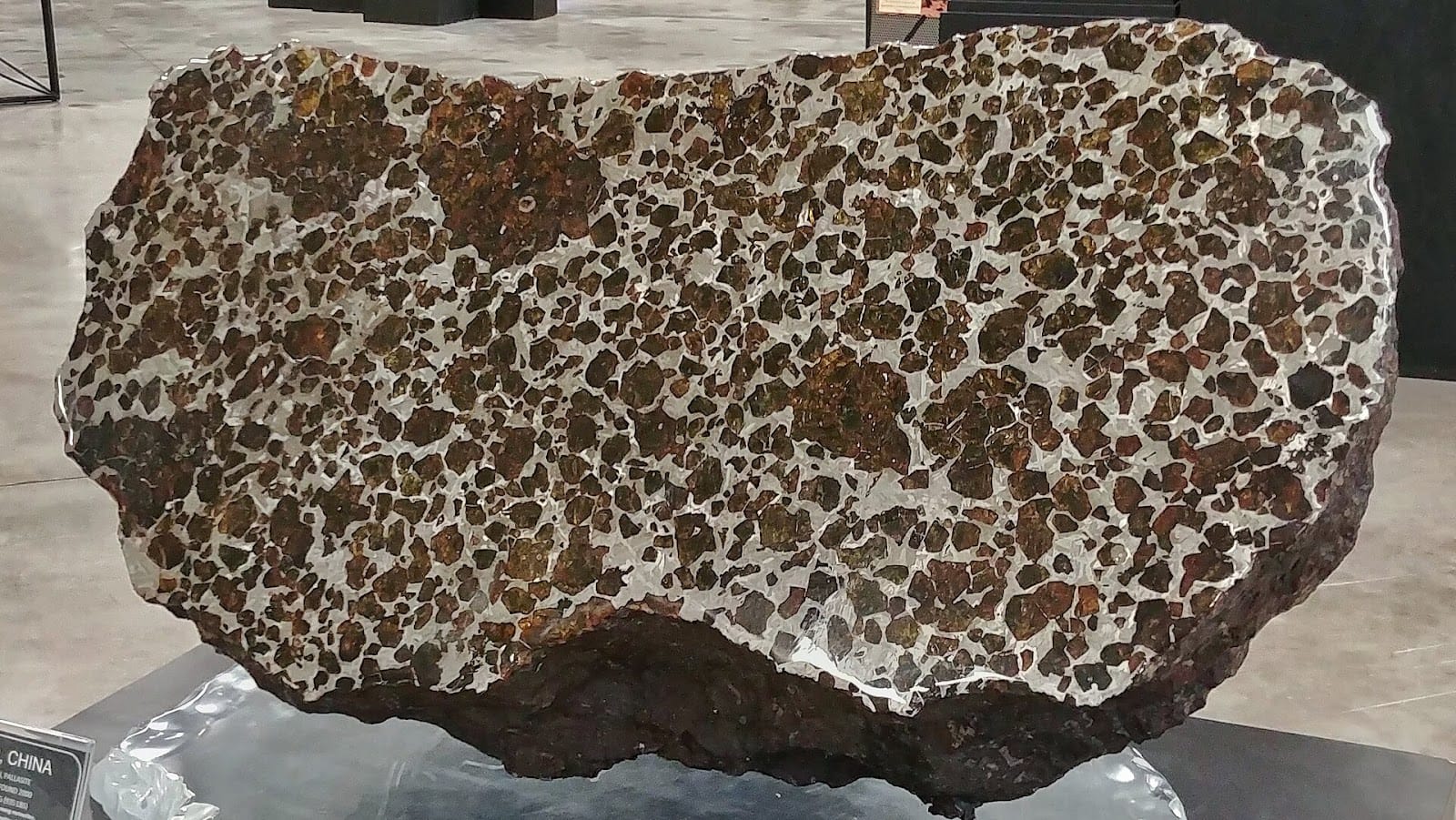
2023's Grand Meteorite Auction - Nest Egg Auctions launched its Spring 2023 Art, Asian, Tribal, and Jewelry auction with a remarkable collection of Campo del Cielo meteorites. Campo del Cielo lent its name to a group of iron meteorites. Among the highlights of the auction was a 17.2-pound Campo del Cielo meteorite. These craters, believed to be 4,000 to 5,000 years old, held significance for Indigenous peoples long before being reported to the wider public after 1576. The discovery at Campo del Cielo yielded an impressive hundred tons of fragments, the largest amount among meteorite finds.
In addition to these celestial wonders, the auction featured an enchanting collection of 16 charms from a seasoned world traveler. A former Pan Am flight attendant who served between 1954 and 1984, she curated a vintage bracelet adorned with charms representing her global escapades. The bracelet and charms boasted a combined gross weight of 60.8 grams. The complete auction catalog and other enticing offerings were available for exploration on Bidsquare's online platform.
Now you know that meteors are not only amazing to watch as they dance across the night sky, but meteorites can also be very wise investments. If you have a desire to see these wonderful displays of nature in some of the most ethereal night skies imaginable, we can plan a special getaway for you when they are happening in areas unencumbered by man-made light. We invite you to reach out to an LVH client relations professional who will begin the planning process for you. As always, you will stay in the most luxurious accommodations with full services and support and we will provide you with a customized itinerary brimming with things you would love to see and do while waiting for the sun to set to see these marvelous meteor showers!
